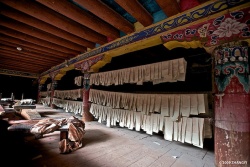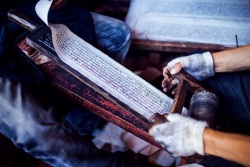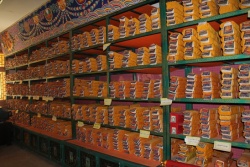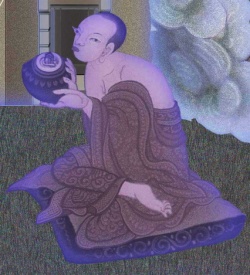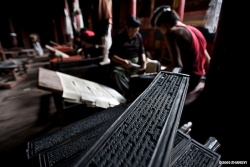Bhutanese literature
Bhutanese literature refers to those that yield knowledge and have positive value. As such, Bhutanese literature divides learing into five headings: grammar, dialectics, healing, the outer sciences and inner sciences that cover Buddhist doctrines and ptractices. These are not purely Bhutanese but are greatly influenced by the growth of Buddhism and have largely been inluenced by other cultures too. The corpus of Bhutanese literature can be broadly classified as follows:
Chhoejung -- Dharma histories and religious literature
Chhoejung means “origin of dharma” with reference to Buddhism. This type of literature includes dharma histories where the Buddhist canons, Kangyur and Tengyur, stand out as the best examples. Kangyur and Tengyur are both vast and complex and represent the teachings of the Buddha. Kangyur contains the translations of the Buddha’s teachings while Tengyur contains the commentaries on the texts found in the Kangyur.
The first translation of Kangyur and Tengyur was done by the Tibetan scholar Buston (1200-1364), which was finished in 1334. The first edition of the Kangyur was printed in 1410 in Peking, which was later taken up by others.
The kangyur has three main sections known as Dulwa (Vinaya), Do (sutra) and yud (Tantra). Chhoejung also includes information on religious aspects other than those contained in the Kangyur and Tengyur. Lhoyi Chhoejung is a text authored by the 69th Je Khenpo, Geshe Gedun Richen. This text deals with the religious movements in the Bhutan and the various schools of Buddhism that took root in Bhutan including the schools of Drukpa Kagyud, Chagzampa, Neyning pa, Shang pa Kagyud and others.
Namthar -- Religious biographies
Namthars are biographies of religious personalities. This type of biography treats not only religious issues but also socio-political issues. For instance, the Namthar of Gyab Sindhu contains the legendary account of Gyab Sindhu. It is considered an important work and the account records the legends relating to his visit to Bumthang in the eighth century and the establishment of a powerful Kingdom there that extended to the whole of Eastern Bhutan and as far as Hor in Tibet. It also presents the details of the invasion that Gyab Sindhu faced at the hands of the neighboring King Nabudara, also known as Naoche, who ruled parts of the Duars, and of how he lost the battle along with his son. The climax of the Namthar is the visit of the Indian saint Guru Padmasambhava to Bumthang and of the introduction of Vajrayana or Tantric Buddhism to Bhutan. The work is a literary classic and has an important historical value for Bhutan.
Gyalrab -- Historical chronicles or genealogies
Gyalrab, which is similar to Dungrab, literally means account or story of kings and can be translated as hostorical chrinicles or genealogies of dynasties or other important families.
Logyu -- Records of history of chronicles
The term logyu literally means "tidings of years". This type of literature maintains a record of history in chronological order. But they do not give year by year account of subject, but rather present a narrative of events that are historical or quasi-historical in rough chronological sequence. The ballad of Pemi Tshewang Tashi and Gelong Sumdar Tashi are the fine examples of logyu.
Terma are the hidden texts that are rediscovered at a later date. Tertoen Pema Lingpa discovered many texts within Bhutan and Tibet.
Srung -- Epics
The epic of Ling Geser is a fine example of literarure that falls under the category of srung. Geser is a Buddhist hero and considered as representative of Guru and the epic of Geser have been published in India, Bhutan and China.
Glu -- Folk songs
Glu together with gur or gurma and nyan ngag form a part of the poetic tradition. A large number of glu texts can be found in the terma literature.
Gur or nyam gyur is a part of glu which denotes a type of Buddhist song and can be found both in oral and written form. Gur might contain subjects dealing with spiritual realization or religious instructions. Milarepa (1040-1123) and Drukpa Kuenly was a great composers of glu.
Nyan ngag -- Ornate poetry
Nyan ngag means "speech soothing to ear" and is an ornate and metaphorically composed by people with literary background including saints who had monastic education.
Karchag -- Catalogues
It is a text that describes the construction of Buddist structures like monasteries, temples, chortens and dzongs. It may also contain description of sacred place aloing with the guide and names of devotees who extended help in construction of these structures.
Tsig dzoed -- Dictionary
Tshig dzoed is a dictionary. A number of Dzongkha dictionaries can be found built and edited by Bhutanese scholars.
